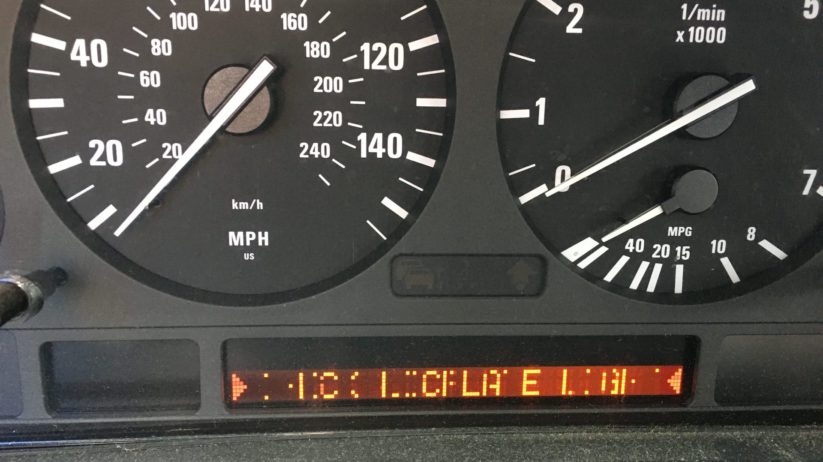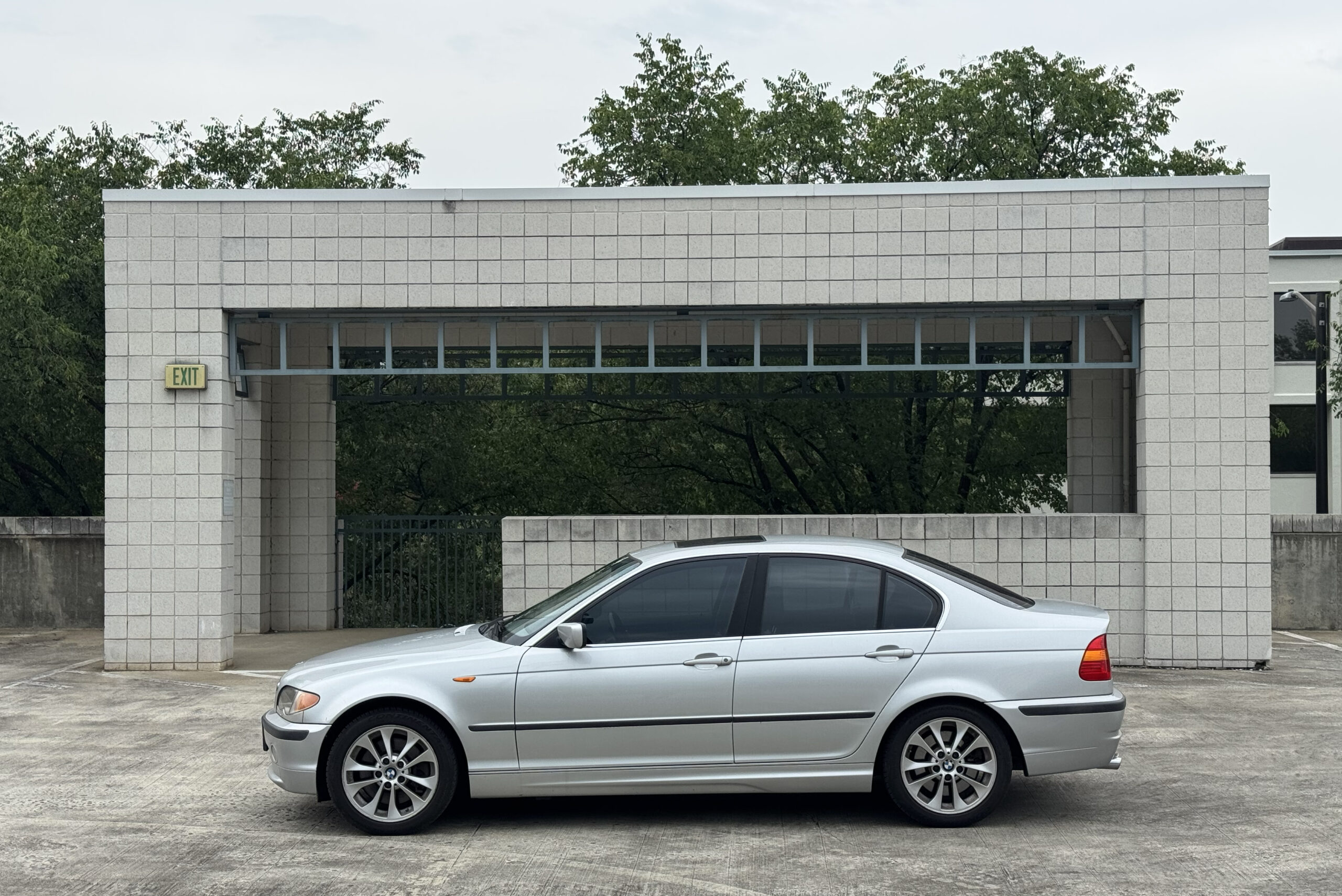A few weeks ago, I talked about putting some time and some scratch into my 2003 E39 530i stick sport, the car I summarily abandoned when I bought the X5 last September. That was before the coronavirus hit; I was thinking about parking the gas-hungry X5 now that the snows are gone (if they were ever really here during this mild winter), and looking forward to driving around in a sedan with nice road manners again. Of course, now, I’m not driving anywhere except to the grocery store or for pleasure drives in the vintage cars.
But still, I had set certain things in motion, and I’m all about finishing things that I start.
I’d identified five areas of needed work: fixing the instrument cluster’s unreadable pixel display, replacing a stick coil to eliminate the occasional throwing of a code and consequent illumination of the check-engine light, replacing the crankcase-ventilation valve and its hosts, squelching a front-end shimmy that’s either due to upper control arms or rotors, and addressing the cooling system.
I began with the pixel display, which had become so bad that even the mileage couldn’t be read, which was going to be a problem at inspection time.

I think this says “Lick lickface LGBT,” or maybe something involving licorice, but I can’t be certain.
It’s very simple to pull the cluster: Remove the two pieces of trim on either side of it, undo the Phillips screws behind them, unscrew the T10 Torx screws on the upper inside rim, lower the steering column and move the wheel as far back as it goes, pull it out, and disconnect the connectors.
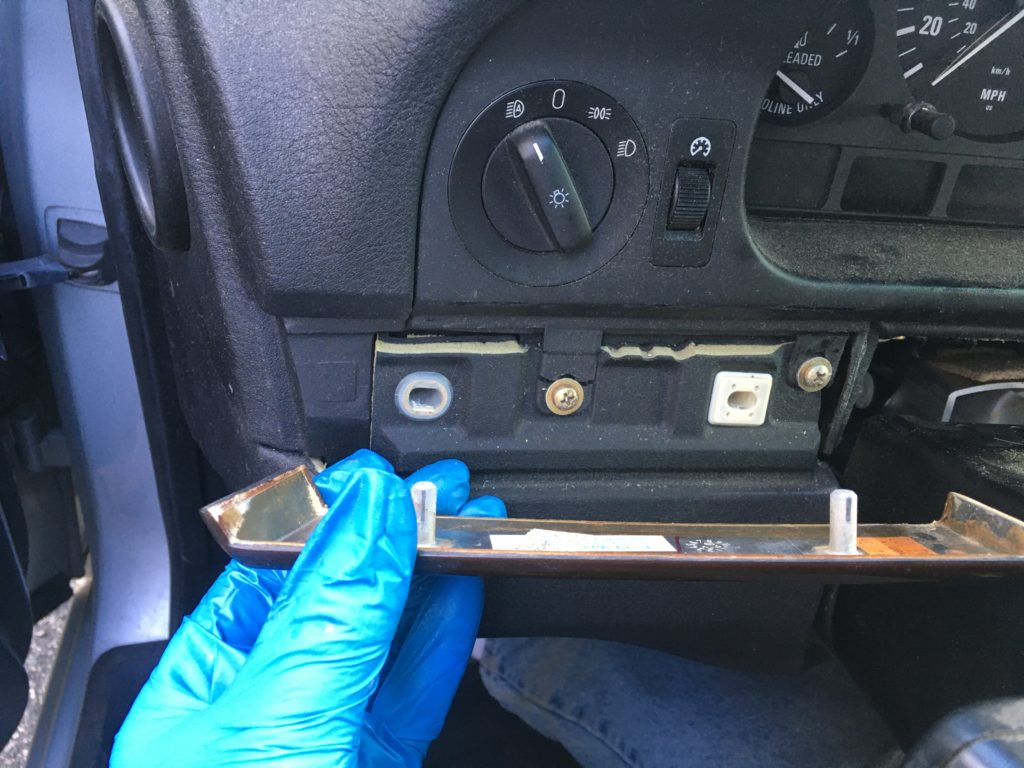
These just pop out with a plastic pry bar.
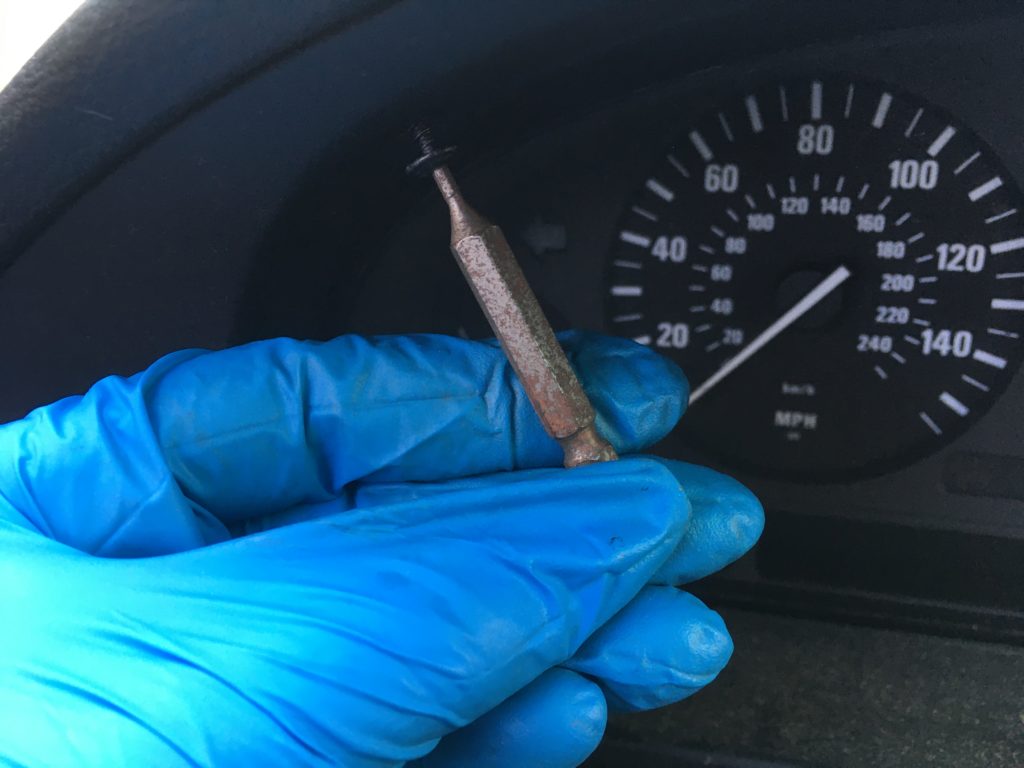
Use a Torx T10 bit on one of the five little screws on the inside of the cowl.
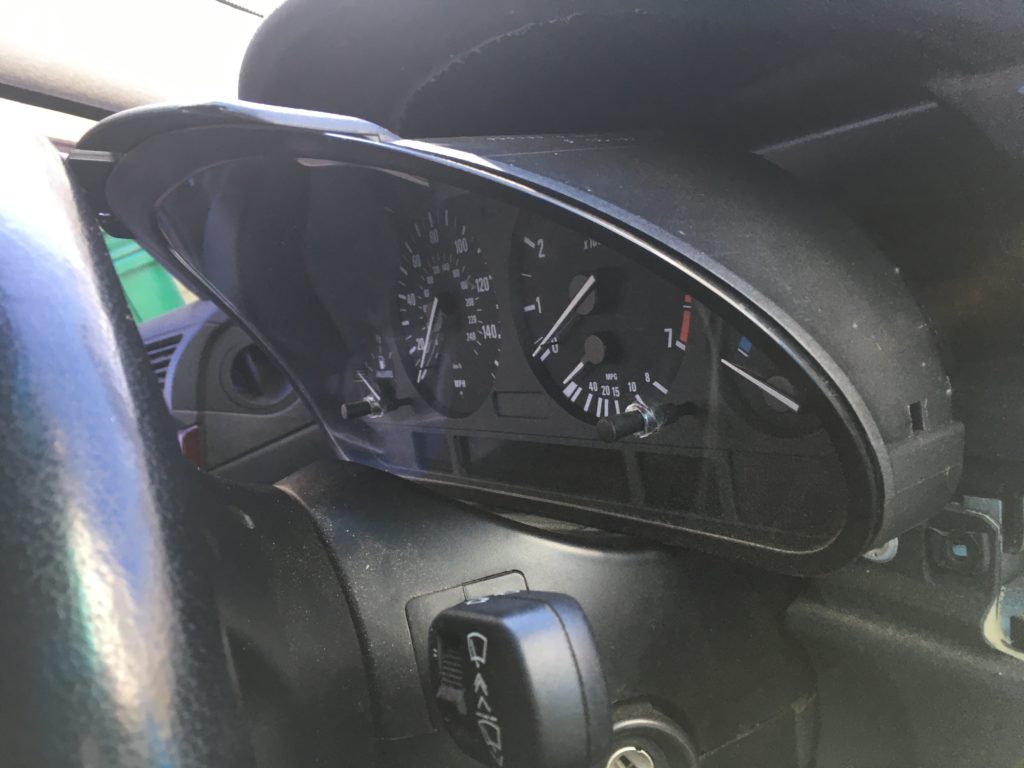
Move the column as far down and back as it’ll go and there’s ample room to withdraw the cluster.
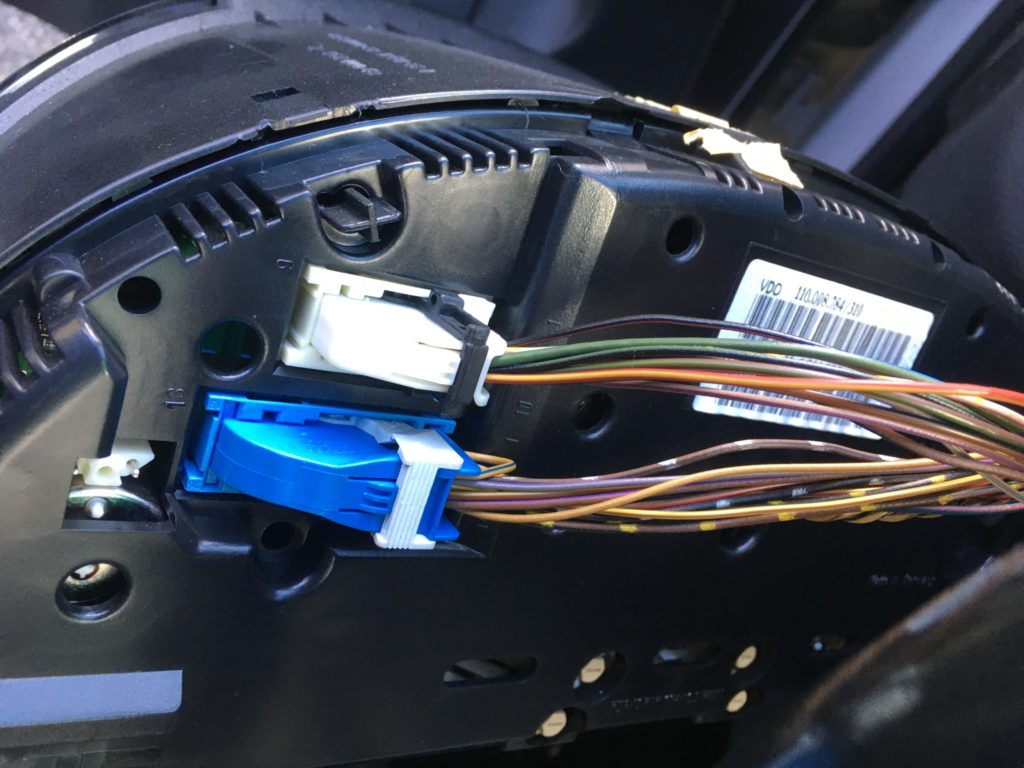
Push the little tabs down, flip the levers, and out come the connectors.
With the cluster out, I could see that someone had been here before, as the tabs at the bottom were broken, and the decal strip across the top had been cut.
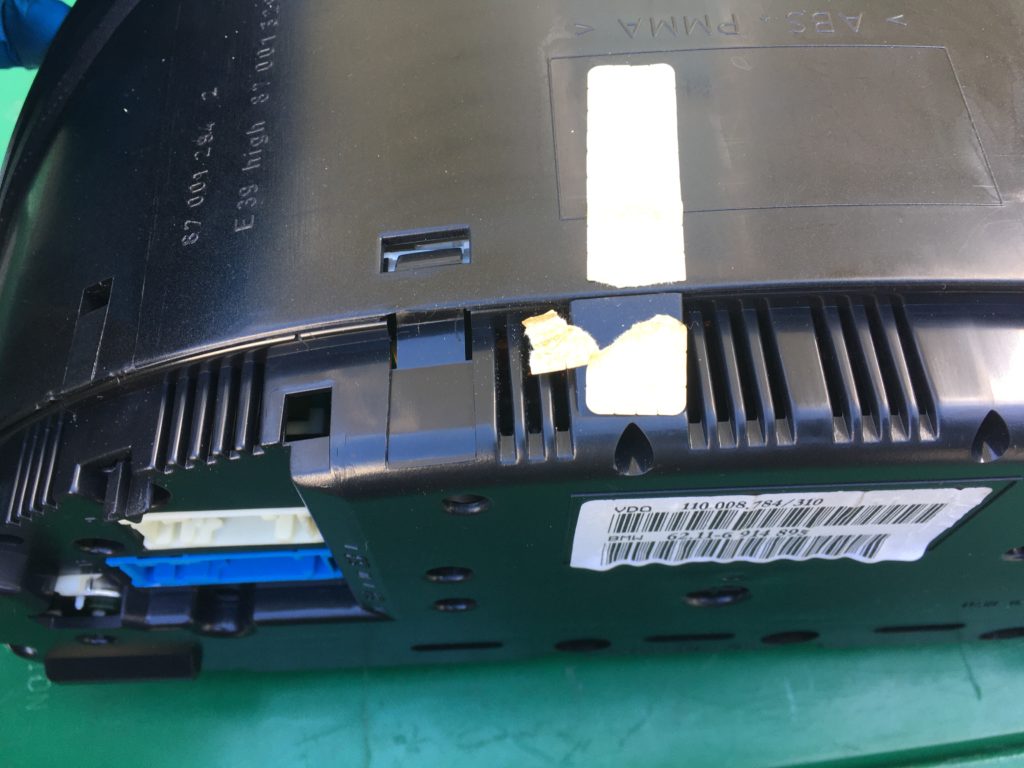
I was not the first.
There are dozens of videos on replacing the cable and pixel display. A very detailed one can be found here. I watched it carefully, and made a decision you’ll find surprising: not to do the repair myself.
Yes, I know: I, who successfully resurrected my Lotus Europa from a 40-year slumber, taking six years to rebuild its engine; I, who bought a decade-dead ’72 tii sight-unseen, drove down to Louisville in a rented SUV with tools and parts, revived the car in place, and drove it the thousand miles home; I, who bought back Bertha, the car my wife and I drove off from our wedding, after it sat in a friend’s garage for 26 years, resurrected it, and drove it to the Vintage and back; I bailed on a simple E39 cable/display replacement. And I did so at a time when you’d think I have endless amounts of time on my hands.
My reasons were several. First, “simple” it is not. I watched the video I linked above. The procedure is fairly involved: You need to separate the front of the cluster from the back, which you do either by removing the needles from the gauges, or by prying up the gauge faces and drilling holes in them to reach the screws. I’ve rebuilt clusters before, doing the odometer in my precious ’73 3.0CSi, which did require pulling the needle off the speedometer, and replacing the batteries in the E28’s cluster, but this looked substantially more involved, requiring many hours at the workbench. One reason I passed was that I was in the middle of my first-ever shimmed valve adjustment of the Lotus engine, and preferred to have my time and concentration remain there.
Plus, there was uncertainty over the parts. You can buy Chinese-made cables for as little as seven bucks, but what I read online in the forums advised buying a good-quality cable and pixel display, and these seemed to be closer to $50.
Then I found that Odo-Pro would rebuild the cluster for $118, including return shipping. Shipping it out cost about $18. For the $70-ish difference in cost, I was perfectly happy to box the cluster up and send it off. Really, it was an exercise in pulling the ripcord and giving myself a break for one repair. I do nearly all my own work other than tire-mounting and balancing and four-wheel alignments; it is the single largest enabling factor of me continuing to own a double-digit number of cars. It’s not like I was deciding to pay a dealership a thousand bucks to do the CVV when I could do it for $150 in parts.
So off went the cluster, and back it came. I had it reinstalled in a few minutes. An extra seventy bucks well spent. And now I actually know when I’m low on oil. Or licorice.

The thing is, I never even KNEW that the car had a lick plate. Or that the damned thing was illuminated.
Next on the list is the CVV. I haven’t done one of these in about five years, and watching the videos, by the time I’m elbow-deep under the intake manifold, I may think that paying people to fix your cars ain’t so crazy after all.—Rob Siegel
Rob’s new book, Resurrecting Bertha: Buying Back Our Wedding Car After 26 Years In Storage, is available on Amazon here. His other books, including his recent Just Needs a Recharge: The Hack MechanicTM Guide to Vintage Air Conditioning, are available here on Amazon. Or you can order personally-inscribed copies of all of his books through Rob’s website: www.robsiegel.com.

